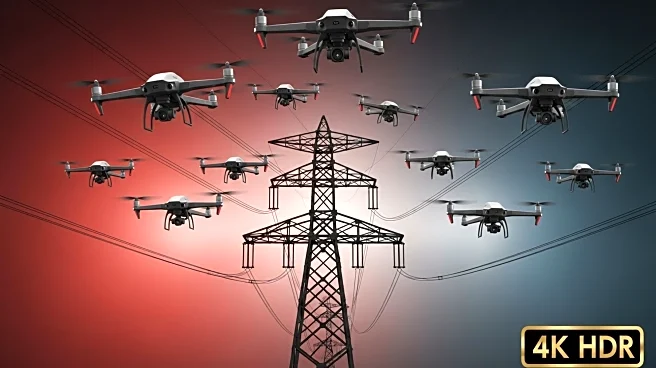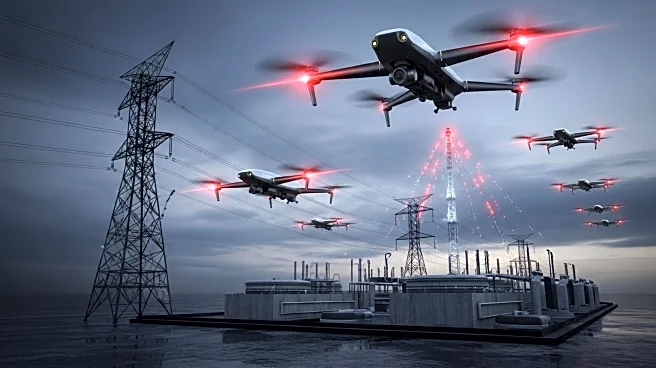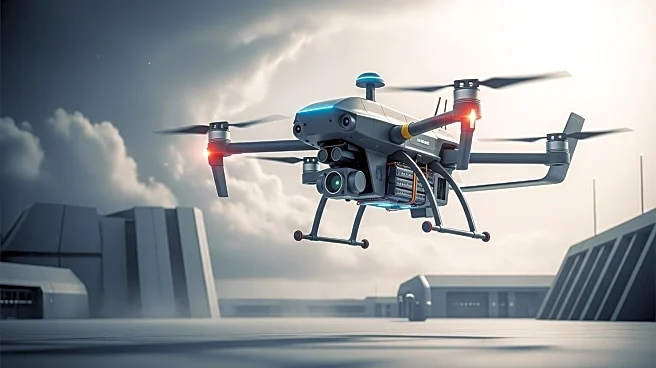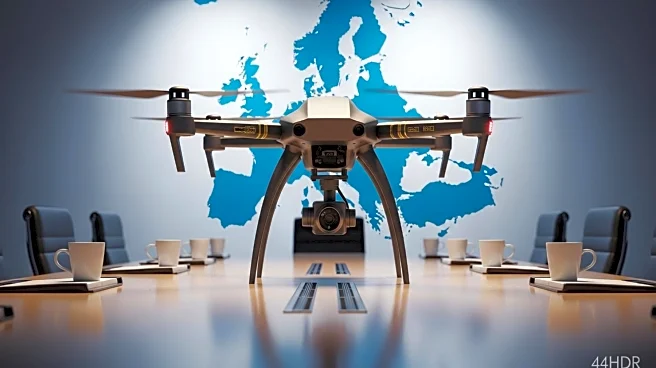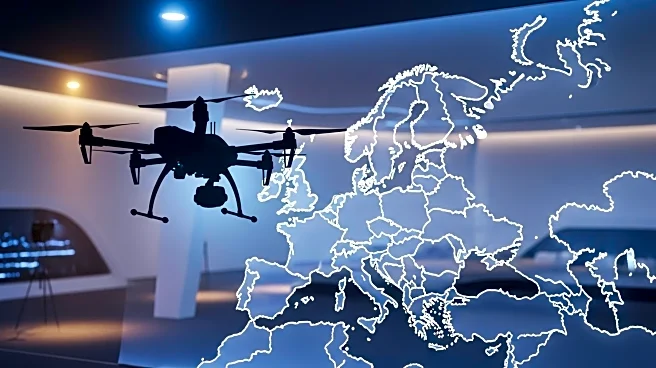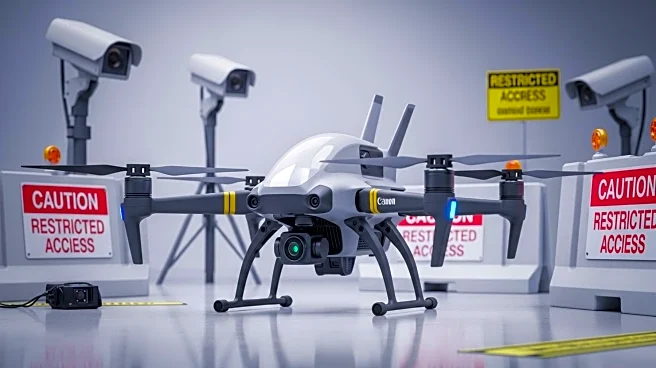What's Happening?
European Union leaders are convening in Copenhagen to discuss measures to protect European airspace from increasing drone incursions, primarily attributed to Russia. A key proposal is the creation of a 'drone wall,' a sophisticated network of detection and interception systems designed to enhance the anti-drone capabilities of individual EU member states. This initiative is part of a broader 'Defence Readiness Roadmap' that includes several defense projects. The concept of a drone wall is not entirely new, as it builds on existing projects like the European Sky Shield Initiative, which aims to strengthen European air and missile defense. The urgency of this initiative is underscored by recent airspace violations, with European leaders emphasizing the need for a united response to these threats.
Why It's Important?
The proposed drone wall is significant as it addresses a critical gap in NATO's air defense strategy, which has traditionally focused on fast-moving air threats like missiles but not specifically on drones. Drones, being small, inexpensive, and capable of causing significant damage, pose a disproportionate threat. They can be used for surveillance and potentially collide with aircraft, posing additional risks. The initiative aims to enhance detection and interception capabilities, potentially using cost-effective electronic warfare methods. This development is crucial for European security, as it seeks to mitigate the risks posed by drones and ensure the safety of critical infrastructure and civilian areas.
What's Next?
The timeline for implementing the drone wall is under discussion, with estimates ranging from a few years to a much shorter period, depending on the level of commitment and resources allocated by EU member states. The initiative will likely involve collaboration with NATO and Ukraine, leveraging Ukraine's experience in drone warfare. As the project progresses, European countries will need to balance defensive measures with offensive capabilities to effectively counter drone threats. The cost-effectiveness of the initiative will be a key consideration, as leaders aim to avoid expensive defense systems in favor of more economical solutions.
Beyond the Headlines
The development of a drone wall raises broader questions about the future of warfare and the role of drones in modern conflicts. As drones become more prevalent, countries will need to adapt their defense strategies to address this evolving threat. The initiative also highlights the importance of international cooperation in addressing security challenges, as no single country can effectively counter drone threats alone. Additionally, the ethical implications of drone warfare, including the potential for collateral damage and the use of autonomous systems, will need to be carefully considered as the initiative moves forward.

